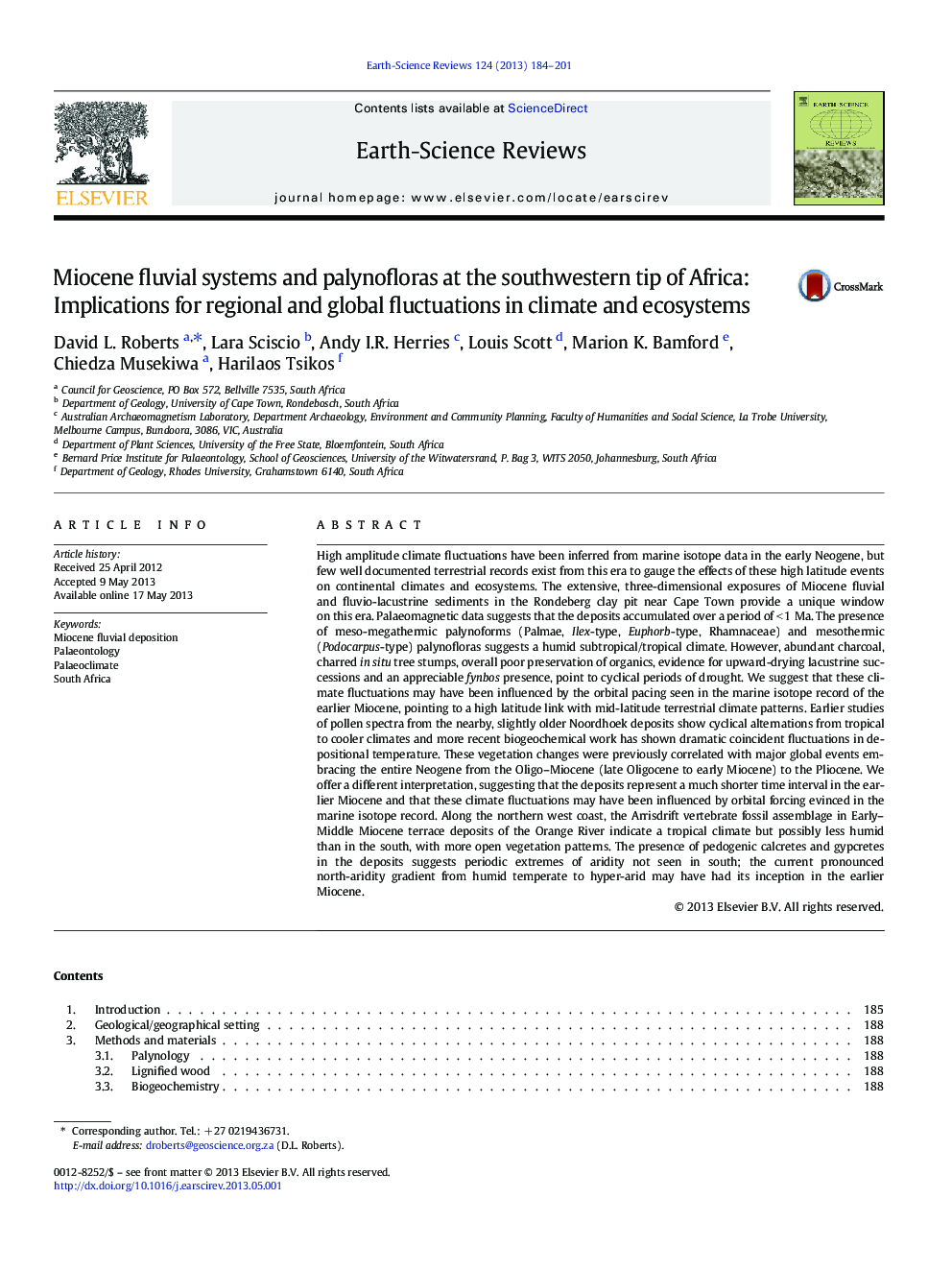| کد مقاله | کد نشریه | سال انتشار | مقاله انگلیسی | نسخه تمام متن |
|---|---|---|---|---|
| 4725854 | 1639978 | 2013 | 18 صفحه PDF | دانلود رایگان |
• Suspension, mixed, and bedload Miocene rivers flowed on South Africa's west coast.
• Mixed and bedload rivers aggraded during rising Oligo–Miocene sea levels.
• Suspension load rivers occupied a stable, low relief costal plane.
• We use palynology, sedimentology and pedology to track Miocene climates.
• The pronounced Miocene climate fluctuations were linked to global events.
• The present steep west coast climate gradient may have earlier Miocene origins.
High amplitude climate fluctuations have been inferred from marine isotope data in the early Neogene, but few well documented terrestrial records exist from this era to gauge the effects of these high latitude events on continental climates and ecosystems. The extensive, three-dimensional exposures of Miocene fluvial and fluvio-lacustrine sediments in the Rondeberg clay pit near Cape Town provide a unique window on this era. Palaeomagnetic data suggests that the deposits accumulated over a period of < 1 Ma. The presence of meso-megathermic palynoforms (Palmae, Ilex-type, Euphorb-type, Rhamnaceae) and mesothermic (Podocarpus-type) palynofloras suggests a humid subtropical/tropical climate. However, abundant charcoal, charred in situ tree stumps, overall poor preservation of organics, evidence for upward-drying lacustrine successions and an appreciable fynbos presence, point to cyclical periods of drought. We suggest that these climate fluctuations may have been influenced by the orbital pacing seen in the marine isotope record of the earlier Miocene, pointing to a high latitude link with mid-latitude terrestrial climate patterns. Earlier studies of pollen spectra from the nearby, slightly older Noordhoek deposits show cyclical alternations from tropical to cooler climates and more recent biogeochemical work has shown dramatic coincident fluctuations in depositional temperature. These vegetation changes were previously correlated with major global events embracing the entire Neogene from the Oligo–Miocene (late Oligocene to early Miocene) to the Pliocene. We offer a different interpretation, suggesting that the deposits represent a much shorter time interval in the earlier Miocene and that these climate fluctuations may have been influenced by orbital forcing evinced in the marine isotope record. Along the northern west coast, the Arrisdrift vertebrate fossil assemblage in Early–Middle Miocene terrace deposits of the Orange River indicate a tropical climate but possibly less humid than in the south, with more open vegetation patterns. The presence of pedogenic calcretes and gypcretes in the deposits suggests periodic extremes of aridity not seen in south; the current pronounced north-aridity gradient from humid temperate to hyper-arid may have had its inception in the earlier Miocene.
Journal: Earth-Science Reviews - Volume 124, September 2013, Pages 184–201
